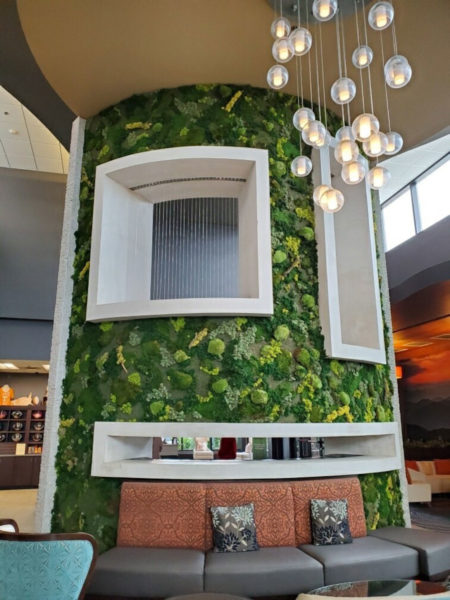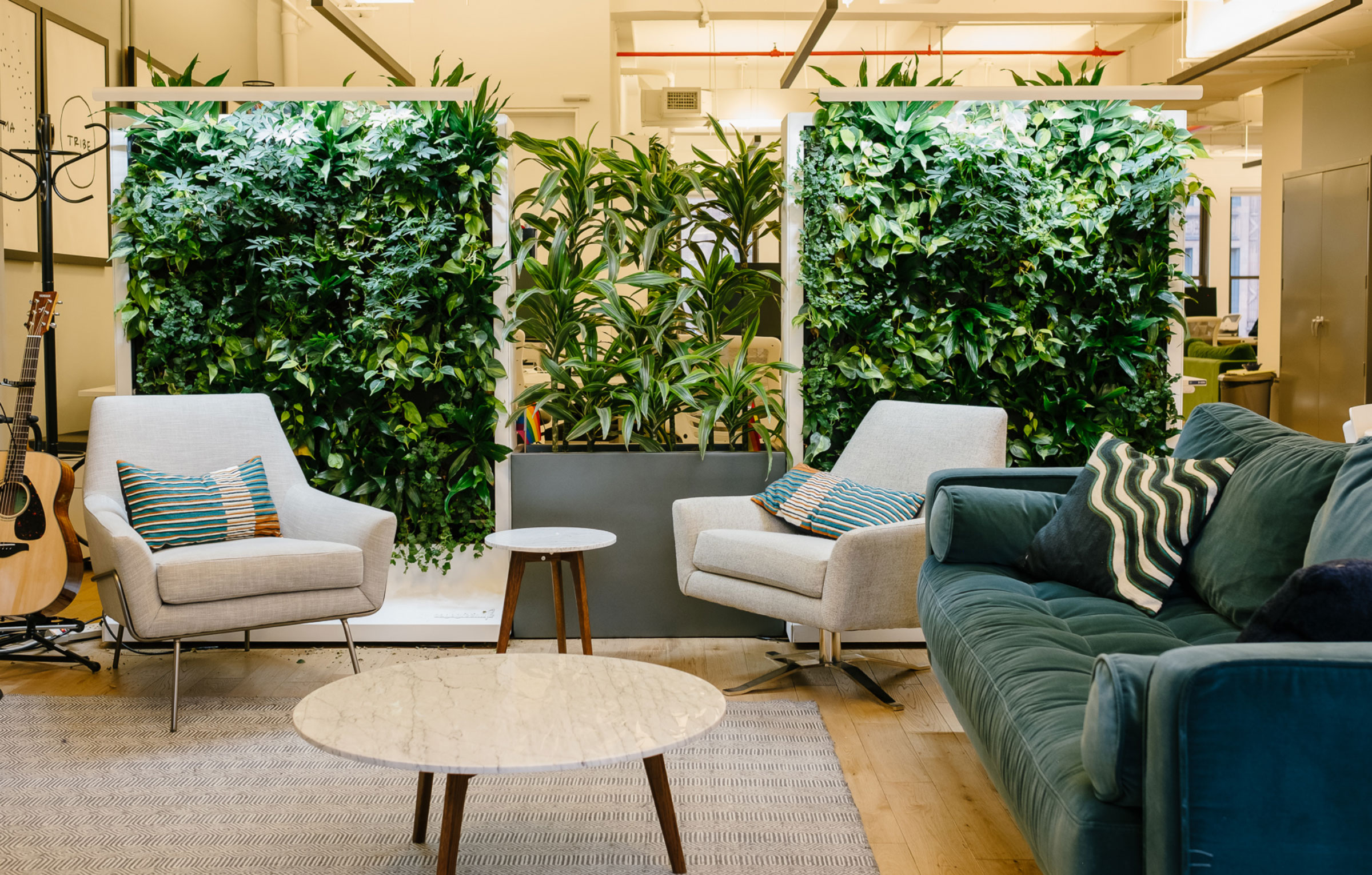The Indoor Air Hygiene Institute estimates that poor indoor air quality costs the US economy $10 billion annually. Whether it is through missed days at work, lower productivity rates, or any number of the many negative impacts that result from poor air quality exposure, it’s clear that businesses simply can’t afford to ignore the state of their indoor air. But there are several tips for improving indoor air quality that building professionals should consider.
Indoor air quality has been a topic of conversation for commercial spaces for decades. The term sick building syndrome was coined by the World Health Organization (WHO) in 1986 and defines the symptoms and health risks, like headache and fatigue, commonly tied to the poor air quality inside office buildings. As the world surpasses the second anniversary of the Covid-19 pandemic, more building operators are taking a closer look at the overall impact exposure to poor indoor air quality can have on both physical and financial well-being.
Although improving indoor air quality is a critical step to promoting a healthy indoor environment, it is not the only step. A healthy indoor environment includes both clean and green enhancements through air, hand, and surface hygiene, as well as biophilic design. Building designers and operators can use these tips for improving indoor air quality to create healthy buildings.
1. Identify Indoor Air Contaminants

Photo courtesy of Ambius
Indoor air contaminants are almost impossible to see, yet they are emitted from everyday products and travel through the air on a consistent basis. In order to promote a healthy indoor environment, building designers and operators must first understand the source of many common indoor air contaminants and the impacts they can have on overall health. These factors can help identify current issues and prevent future contaminants.
COVID-19 and other viruses
For the past two years, Covid-19 and its variants have spread throughout the world, reminding everyone in its path just how quickly and deadly airborne viruses can be. Aerosol viruses spread through tiny droplets expelled into the air when someone coughs or sneezes. A single cough or sneeze can spread germs as far as 27 feet at almost 100 mph. Without proper ventilation, these germs can linger in the air and produce an increased risk of cross-contamination.
Allergens
Allergens like dust, pollen, and pet dander are emitted from everyday office and household items. These particles can attach to skin and clothes and travel from person to person. Exposure to these contaminated particles can cause irritated skin and eyes, nose and throat congestion, respiratory problems, and more.
Bacteria
Harmful bacteria can quietly form and spread throughout indoor environments. Animal dander, dust, plant debris, and mold are some of the transmitters of bacteria. Exposure to these pollutants can lead to many issues, including digestive problems, asthma, and dizziness.
Smoke
Smoke is a complex mixture of gases and airborne particles released from cigarettes, wildfires, and wood-burning stoves. Additional forms of smoke emitted from commercial kitchens, restaurants, and even vehicles are also extremely harmful to breathe in. Exposure to smoke can damage the lungs and have a lasting impact on lung and heart health.
Volatile Organic Compounds
Volatile organic compounds (VOCs) are the gases emitted from everyday cleaning products, paints, and thousands of other household and office items. According to the EPA, concentrations of many VOCs are consistently higher indoors, up to 10 times higher than outdoors. These gases can have short and long-term adverse health effects like headaches, nose and throat discomfort, and damage to the liver and kidney.
Addressing these indoor air contaminants is critical to the health and safety of shared interior spaces. Air decontamination units like VIRUSKILLER™ by Ambius can provide real-time protection from indoor air contaminants with higher efficacy than traditional air purification units. These devices are designed to take control of the airflow and continuously draw contaminated air away from the breathing zone, deactivating airborne viruses and pathogens with each air pass.
2. Focus on High-Risk Areas

Photo courtesy of Ambius
Every commercial space has high-risk areas where people tend to congregate. These areas may include break rooms, common areas, elevator banks, reception areas and lobbies, kitchens, and restrooms. To further protect building occupants, implement proper hand and surface hygiene measures in all areas, especially high-traffic areas.
Hygiene experts found that contaminated hands can transfer germs and viruses to more than five surfaces and to 14 other objects. These germs can live on hands and fingertips for up to three hours, and on surfaces for multiple days if not properly cleaned. To put this into perspective, adults can touch as many as 30 objects in 60 seconds, imagine the amount of cross-contamination that can spread throughout high-traffic areas without proper hand and surface hygiene methods in place.
Facility managers can start by placing mobile hand hygiene units throughout commercial spaces and in high-traffic areas. Placing mobile hand hygiene units around the facility will serve as a visual cue of improved hygiene standards and will remind tenants that right now is a great time to sanitize. To estimate the right amount of hand sanitizer recommended for your property, you can use this hand hygiene calculator.
Treat high touch points and common surface areas like door handles, handrails, switches and buttons, lobby tables, faucets, and break room counters with EPA-approved disinfectants. Disinfectants need time to kill or inactivate the pathogens they contact, and without giving disinfectants the proper dwell time, the effective rate may be reduced.
Designers can create healthy indoor environments by understanding how these spaces are used. Take a walk through the building during high-traffic hours, pay attention to where people gather, and ensure air, hand, and surface hygiene are optimized in shared spaces.
3. Bring in Biophilic Design

Photo courtesy of Ambius
When designing commercial spaces, strive for clean and green. Incorporating plants and other elements of nature inside a commercial space can significantly enhance the look and feel of that area, which in turn helps brighten people’s moods and improve their overall health and well-being.
“In addition to enhancing moods, reducing stress and fatigue, and improving one’s overall well-being, a high number of larger plants that are actively growing can help raise the relative humidity level in certain environments,” says Matthew Kostelnick, senior horticulturist for Ambius. “By increasing the relative humidity level, plants can have a relaxing effect on people, reduce dust, and remove allergy-inducing particles. Specifically, larger plants that are actively growing—like dracaenas, palms, ficus, ferns, et cetera—can help raise humidity levels and help with air quality due to a high level of metabolism and photosynthesis.”
Building designers and operators can use these biophilic design techniques to promote healthy building habits in a variety of ways. Below are some of the design features you can implement.
Sustainably sourced and reclaimed woods – Wood is a popular construction element and is a central part of the biophilic revolution. Wood enhancements are great for simple aesthetic flourishes and large-scale architectural installments.
Biophilic ceilings – Ceilings are having a moment in the design spotlight. From hanging plants to skylights and statement ceiling designs to circadian lighting installations, the ceiling is the next frontier for interior designers and architects.
Green integration – Trends data suggests that architects and designers are increasingly integrating plants, living green walls, large green installations, and more into designs during pre-construction and renovations, rather than adding them post-completion as a secondary aesthetic choice.
Biodynamic lighting – Biodynamic lighting is the next evolution of commercial lighting. This trend introduces lighting systems that mirror natural sunlight conditions within the built environment, which help to regulate your circadian rhythm.
Green dividers – The wellness design trend puts people and function squarely at the center of the design. This new focus created challenges within the popular open-plan office landscape. Enter the green wall divider, a revolutionary space-enhancing element that provides resolution to many of the challenges facing open office environments everywhere. Green dividers are agile and adaptable for dynamic workspaces while also incorporating a natural biophilic component at minimal cost and invasiveness.
Protecting building occupants through proper air, hand, and surface hygiene methods is imperative, but it’s also expected and may not receive the same recognition as some of the more aesthetically pleasing building enhancements. Take clean building habits a step further with these biophilic design techniques.
“Implementing clean and green healthy building habits will show consumers, employees, guests, and students that their health and wellbeing is important,” says Matt Hayas, director of product and innovation for Ambius. “At a time when people are concerned about going back to work or generally being in public, showing this investment in safety can help to encourage people to come back.”
From a financial perspective, a Harvard University study found that doubling air ventilation rates alone produced a $6,500 productivity increase annually, per employee. When building designers and operators combine a clean building environment with these tips for improving indoor air quality, it generates a range of short and long-term benefits. Investing in the health and safety of consumers and employees is also an investment in the company.


